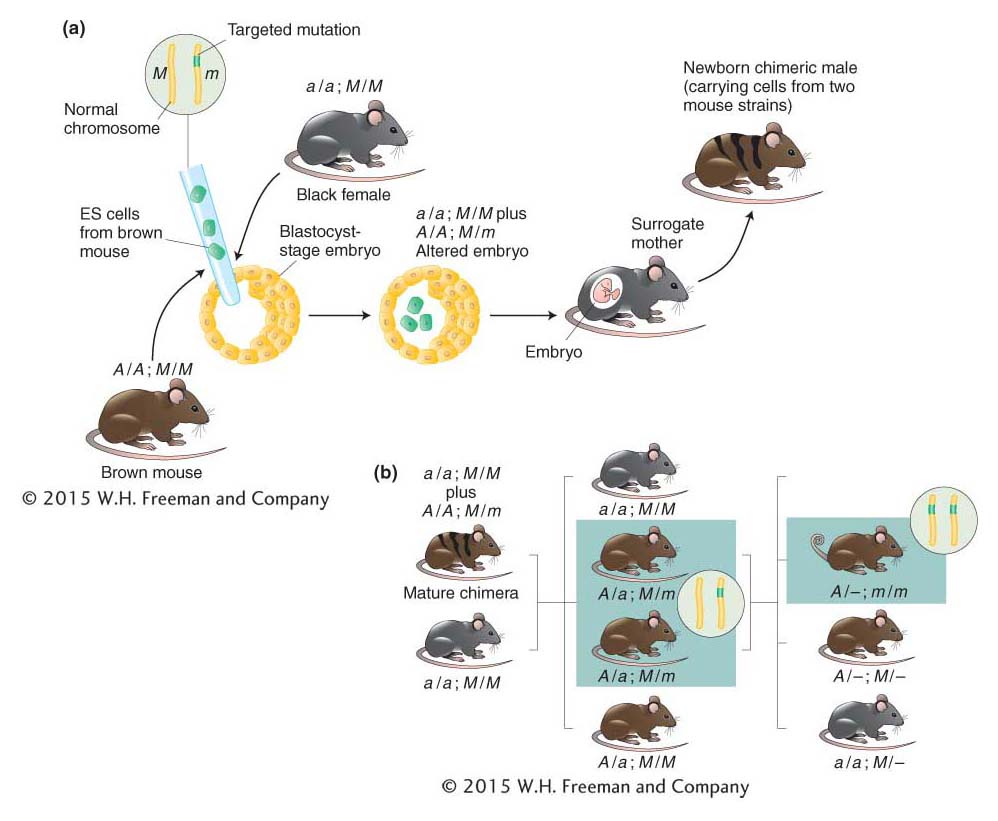
A knockout mouse is produced by inserting ES cells carrying the targeted mutation. (a) Embryonic stem (ES) cells are isolated from an agouti (brown) mouse strain (A/A) and altered to carry a targeted mutation (m) in one chromosome. The ES cells are then inserted into young embryos, one of which is shown. Coat color of the future newborns is a guide to whether the ES cells have survived in the embryo. Hence, ES cells are typically put into embryos that, in the absence of the ES cells, would acquire a totally black coat. Such embryos are obtained from a black strain that lacks the dominant agouti allele (a/a). The embryos containing the ES cells grow to term in surrogate mothers. Agouti shading intermixed with black indicates those newborns in which the ES cells have survived and proliferated. (Such mice are called chimeras because they contain cells derived from two different strains of mice.) Solid black coloring, in contrast, indicates that the ES cells have perished, and these mice are excluded. A represents agouti; a, black; m is the targeted mutation; and M is its wild- y-